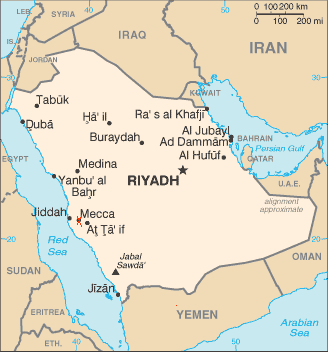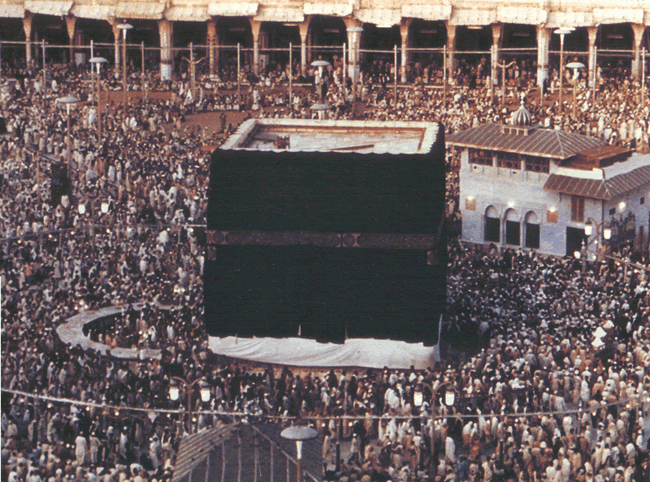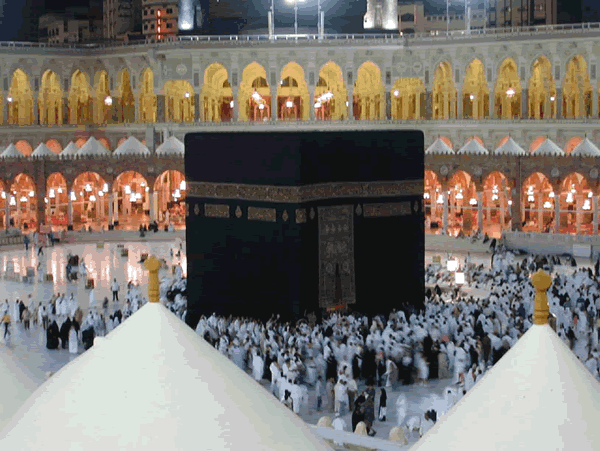 |
 |
KAABA - SAUDI ARABIA
 |
 |
| Location: | Geographic coordinates: | Area: | Area - comparative: |
| Middle East, bordering the Persian Gulf and the Red Sea, north of Yemen. | 25 00 N, 45 00 E | total: 1,960,582 sq km | Slightly more than one-fifth the size of the US |
| Population: | Languages: | Capital: | Currency: |
| 25,795,938 | Arabic | Riyadh | Saudi riyal (SAR) |



| Types of rocks: | Until now scientists did not have access to see the make up of the Kaaba. The believe is that the Kaaba is a rock of meteoritic origen. Meteorites are form of melts like basalt (Igneous rock), or entirely magnetite (Mineral), or chondrites which are accretion of melt material over a core. Based on the color of the Kaaba (dark red brown with some black) most probably it is made of a combination of magnetite and basalt (Igneous rock). |
The Black Stone, or the Kaaba stone, is set on the outside of one corner of the Kaaba is kissed by all pilgrims who can gain access to it. It is a dark, red brown, and now encased in a massive silver band. It is presumed to be of pre-Islamic origin, possibly meteoric. Myths claim that it fell from heaven, or perhaps that it was brought to earth by angels as a white stone in order to provide the cornerstone of the original Kaaba. It turned black by the impure touch of humans across the millennium. It is lovingly referred to as "the cornerstone of the House," or even the "right hand of God on earth." This stone was presented by Gabriel for the Kaaba and the people who worshipped within it. Muslims, in general, try to kiss, touch, or point to the Kaaba Stone, and often make circumbulations (tawaf) around it. Such circumbulations form, during the pilgrimage season, an integral part of the pilgrimage performance. This circumbulation is performed in the vicinity of the Kaaba, on the polished granite called the mataf. There is a place between the Black Stone and a raised door, against which pilgrims press their bodies in order to receive the blessings and powers that are associated with the holy house. Muslim peoples claim that it is not an idol to be worshipped, instead it is a special place from which to send prayers. The correct name for the Kaaba Stone is the Al-Hajarul Aswad.
© Guillermo Rocha, P. G. / Brooklyn College Geology Department